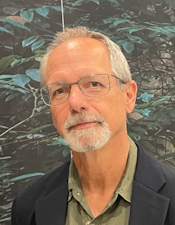Kicking off Education of the Future in Nam Tien, Laos
Project Update
Publish date: February 28, 2024

Youth engagement and environmental education
Youth engagement and environmental educationKicking off Education of the Future in Nam Tien, Laos
Project Update
Youth engagement and environmental education
Youth engagement and environmental educationPublish date: February 28, 2024
The remote Sayaboury province in Laos has witnessed its forest cover decrease from 71% in 2017 to 58% in 2019. The Nam Tien landscape in the province has also seen large-scale cultivation of monoculture crops for export that is leading to soil degradation and unsustainable land use. Knowledge and tools to find alternative livelihoods and a more sustainable approach to farming are now more important than ever. There is no better time to cultivate environmental education for the future generations, and this is where we come in.
Conserving nature while sustaining livelihoods is no simple task but the starting point is to work together, and work for the future. The Wyss Academy Hub Southeast Asia is kicking off environmental education activities in five schools where challenges lie ahead for communities and younger generations. In the remote area in Sayaboury province, Laos, we are working with environmental educators, school directors and teachers to listen to their needs and create linkages between local partners.
By connecting the Northern Agriculture and Forestry College (NAFC) in Luang Prabang, Laos with local schools in Nam Tien, we have trained elementary and secondary school teachers and students on waste management, compost-making and growing their own vegetable gardens. In the past, the schools lacked a facility for proper waste management and tended to burn to get rid of the waste, polluting the air with unhealthy toxins that the students would breathe in. Now, with environmental education, teachers and students sort recyclables for sale and sprinkle their vegetable gardens with compost from organic waste.
Based on the needs of teachers and schoolchildren, the Wyss Academy Hub Southeast Asia has renovated the five schools to create safe and conducive learning spaces for more environmental education in the future. For example, we have installed water purifiers in the schools to provide safe drinking water and reduce the use of plastic water bottles. This cuts the costs of ordering drinking water that comes in plastic bottles for schools and parents, and kids do not have to carry heavy water bottles from their home to the schools.
This is just the beginning. During our last meeting in July with teachers and school directors, together, we came up with a plan for further environmental education in schools. Our environmental educators are going to work with schoolteachers on biodiversity and climate change resilience education. We are excited to work with the future generations, to make schools a hub for environmental engagement and an entry point to the local community.
A solution to Nam Tien’s future lies with the children, and it is the way forward.


Team
- Project contactProject contact
Dr. Horst Weyerhäuser
Hub Director
